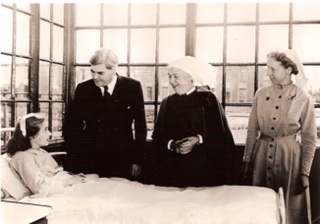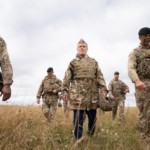In praise of the white poppy
Ekklesia
Jill Segger considers the growing appeal of the white poppy
The season of remembrance is upon us once more . Last year, I wrote of the red poppy as a ‘compromised symbol’ (http://www.ekklesia.co.uk/node/15709) and this November, it seems appropriate to consider the growing appeal of the white poppy in a time of change.
It was in the years following World War I that support for a different way of memorialising began to emerge. Women took a lead in this movement towards change. Those who had lost sons, husbands, fathers, brothers and lovers to the slaughter or who lived with men maimed in body or mind – some of whose suffering was a result of imprisonment for their refusal to fight – were influential in the ‘No More War’ movement.
In 1926, the movement asked the British Legion to put the words ‘no more war’ in the centre of the red poppy instead of ‘The Haig Fund’. The idea was not accepted but it did not wither away. And with the support of the Cooperative Women’s Guild, the first white poppies appeared in 1933.
The carnage in Iraq and Afghanistan has brought the destruction of war centre-stage for those of us who were born after 1945 (and it is worth remembering that since that date, there has only been one year in which British forces were not involved in armed conflict somewhere in the world). It is almost a century since the rituals of remembrance began and during most of those years, the ceremonies took place in a lower key and were largely without wider political significance. But recent years have brought a change. The British Legion organises the events and its slogan this year is ‘Shoulder to Shoulder with all who serve.’ This is not about the horror and pity of war; it does not invite reflection on the dead of other countries, either civilian or military, or on the desolation and ruin of environments – of what the First World War poet Edmund Blunden described as “ a green country, useful to the race, knocked silly with, guns and mines, its villages vanished.” Nor does it challenge us to address the cumulative effect of generations of greed, abuse of power, fear, self-interest and lack of vision which is the seed bed of war.
There appears to be a growing feeling – despite the admiration for the Armed Forces into which we are increasingly being encouraged – that we need to be more critical of the narrative presented to us by a militarily-oriented interpretation of what it means to remember. There is, without doubt, both disquiet at, and resistance to, David Cameron’s stated desire for a “truly national commemoration” of the first world war that will “capture our national spirit … like the diamond jubilee”.
The Ministry of Defence seeks to differentiate between support for war and support for the men and women who suffer death or maiming in its cause. But if we accept this stance without interrogation or analysis, the status of military personnel as unquestioned agents for good becomes embedded. It has become all but impossible to question this assumption or to express any disquiet as to the moral worth of projecting force as a solution to conflict. Cases of mistreatment of Iraqi and Afghan people are framed so as to discourage critical enquiry. It is doubtless true that these crimes are carried out by a minority of armed combatants, but they are a reminder that war tends to undermine the moral sense and self-control of those whom we contract to carry it out. The brutalising experiences of combat lead many to harm themselves and others when they return to civilian life. These people deserve our compassion and support. But it is neither unpatriotic nor ungrateful to decline to see them as an embodiment of a ‘national spirit’ or as heroes whom we must hold in unqualified admiration. They are victims of the huge and tragic failure that is war and that asks of us repentance rather than ‘celebration’ or hero-worship.
As we approach the centenary of the ‘war to end all wars’, it would seem the right time to acknowledge that changing perceptions may be better served by less rigidity about symbols. The white poppy opens up a space in which remembering all the victims of war goes hand in hand with considering those things which make for peace.
See more: remembrance,









